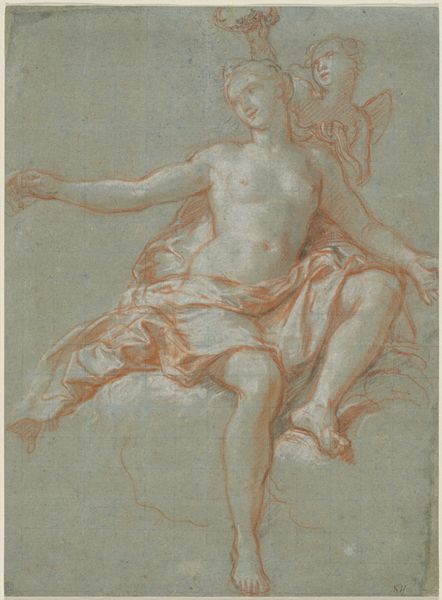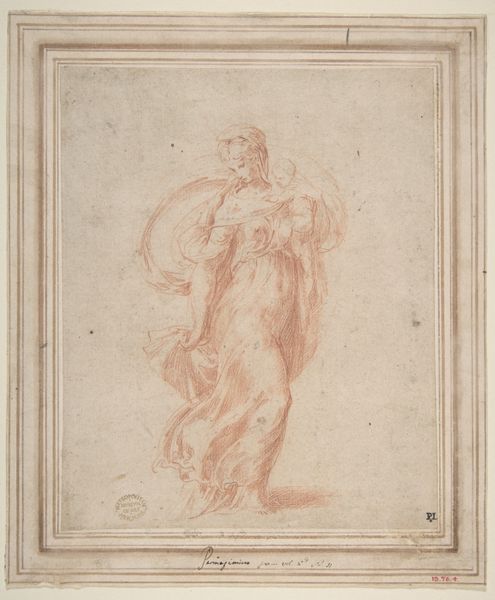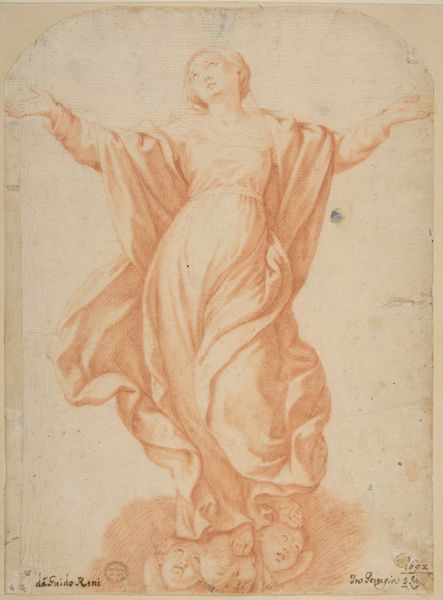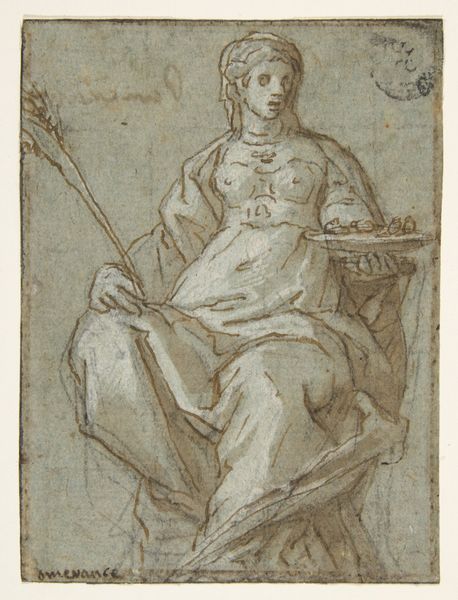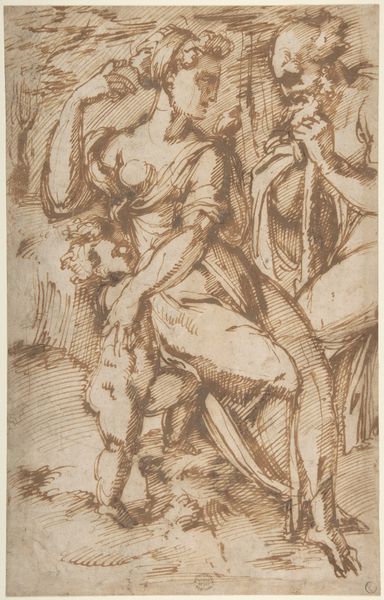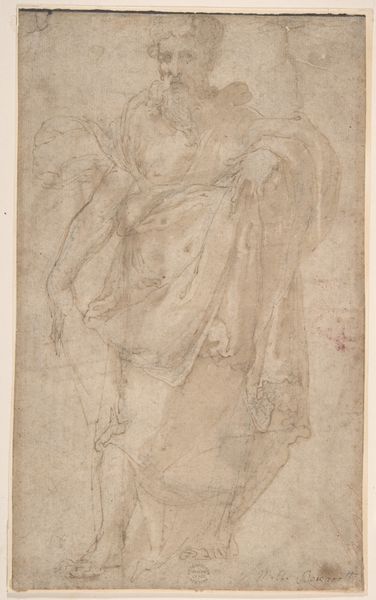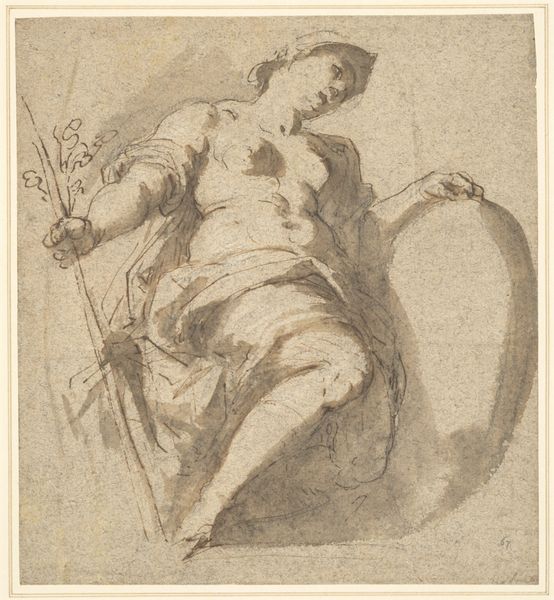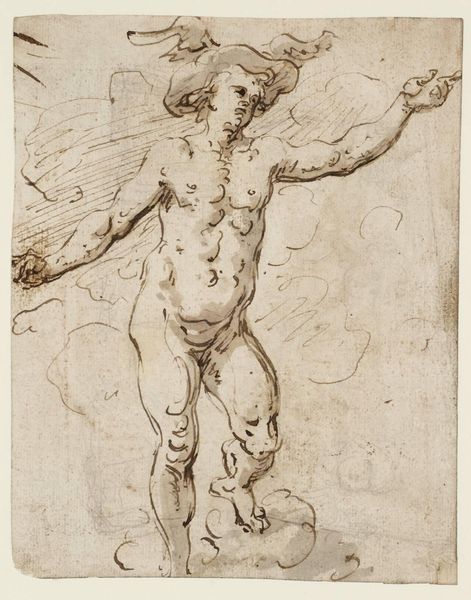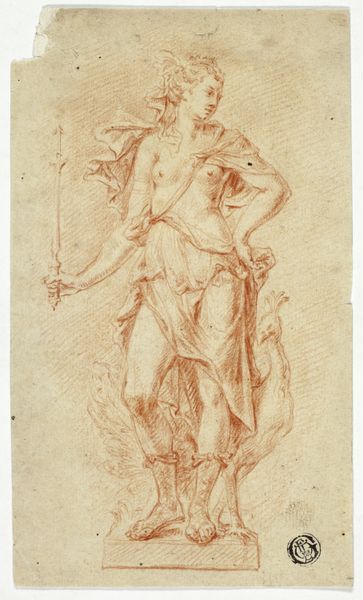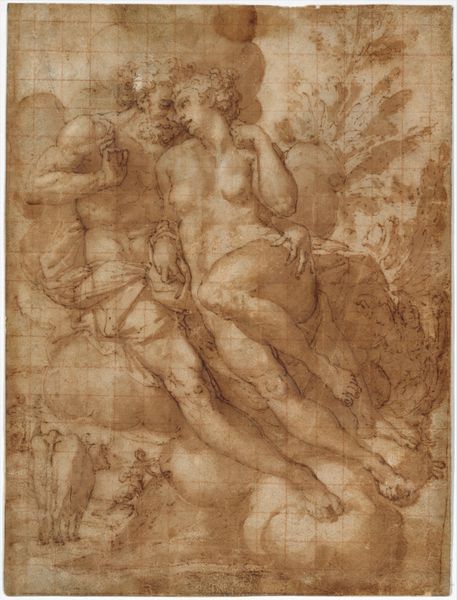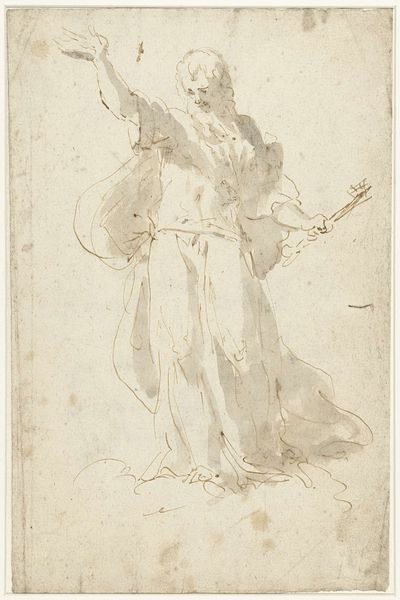
Flora (recto); Mountainous Landscape with Buildings (verso) 1500 - 1600
0:00
0:00
drawing
#
drawing
#
charcoal drawing
#
figuration
#
11_renaissance
#
italian-renaissance
#
nude
Dimensions: 7-1/16 x 5-1/4 in. (17.9 x 13.3 cm)
Copyright: Public Domain
Curator: This charcoal drawing, dating from 1500 to 1600, presents us with a dual study—"Flora" on the front and a "Mountainous Landscape with Buildings" on the back. It is an intriguing artwork, currently residing at the Metropolitan Museum of Art. Editor: Oh, she's quite ethereal, isn't she? A dance of light and shadow. There’s an almost melancholic beauty in this Flora. It is the gentleness of line, so immediate. I almost feel I am standing over the shoulder of the artist as they sketch. Curator: Indeed. The handling of the charcoal speaks volumes. Look at the cross-hatching. Note, also, how that technique is employed to suggest the fall of light. She has one hand holding some floral object or fruit over her head; with her other she supports what appears to be a patterned cornucopia brimming with an offering. Considering the cost of materials in the 16th century, the availability of drawing equipment is implied for a larger circle of artists. Editor: It makes me wonder who this artist might have been, working, thinking. Do you get a sense that maybe Flora isn't so much a portrait, but perhaps the study of form itself? It has a sense of someone wrestling with shadow. Almost wrestling with representation. Curator: That's a pertinent observation, particularly within the context of the Renaissance's fascination with humanism and classical ideals. Also remember, charcoal wasn’t only used for sketching. It was a means of production for many finished works. I believe the intent here may have been more academic, but I completely agree it evokes something truly spiritual. Editor: Right, a deep engagement, one could say, to material investigation that brings you somewhere beyond academic training! The artist manages to breathe life and feeling into it, creating something far more evocative than mere observation, I would offer. A tension of light and shade, of making. Curator: Precisely. And considering this work’s presence in a museum like the Met, its conservation becomes another important part of that materiality and history of its creation. A work continues its existence. Editor: Absolutely!
Comments
No comments
Be the first to comment and join the conversation on the ultimate creative platform.
